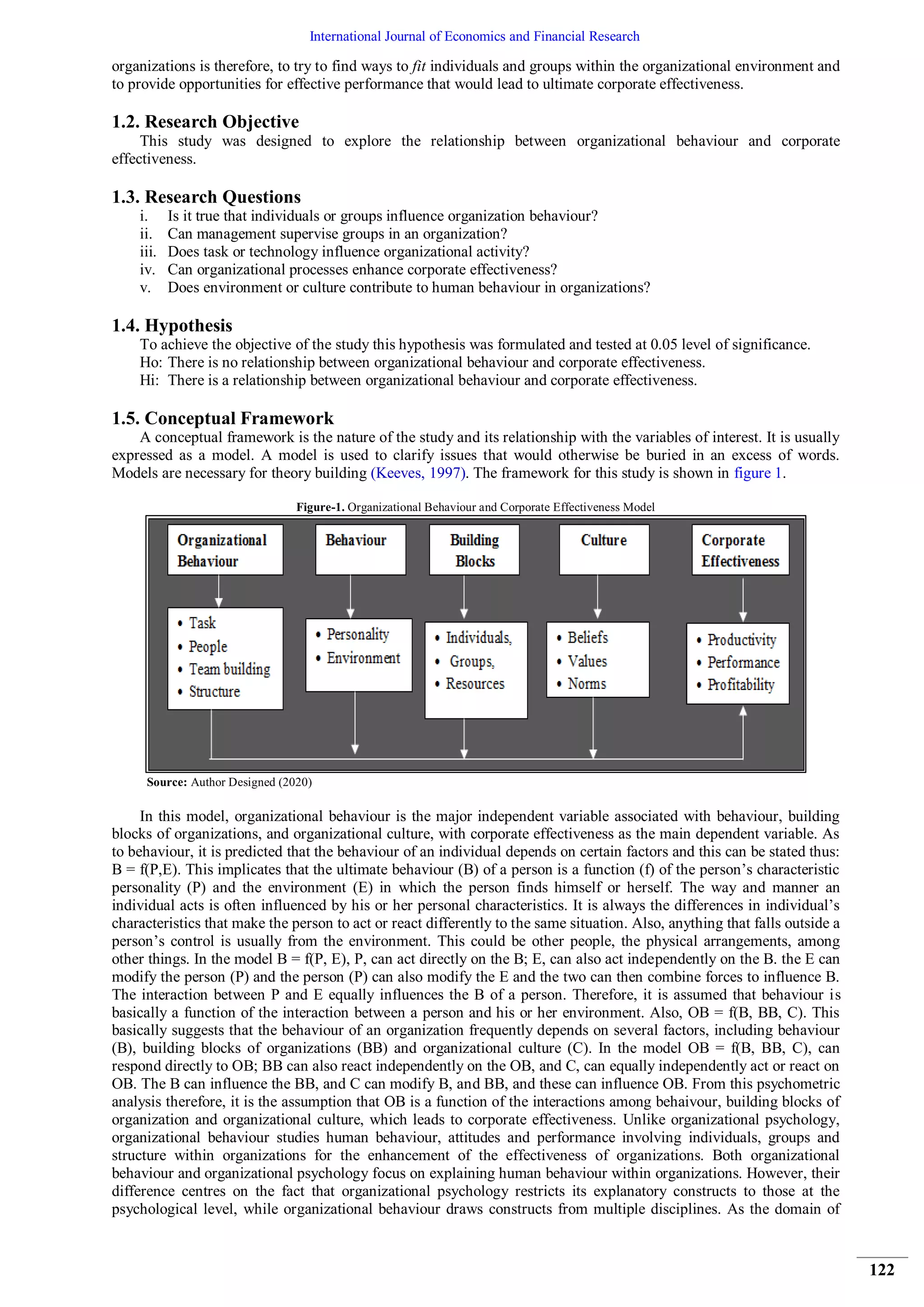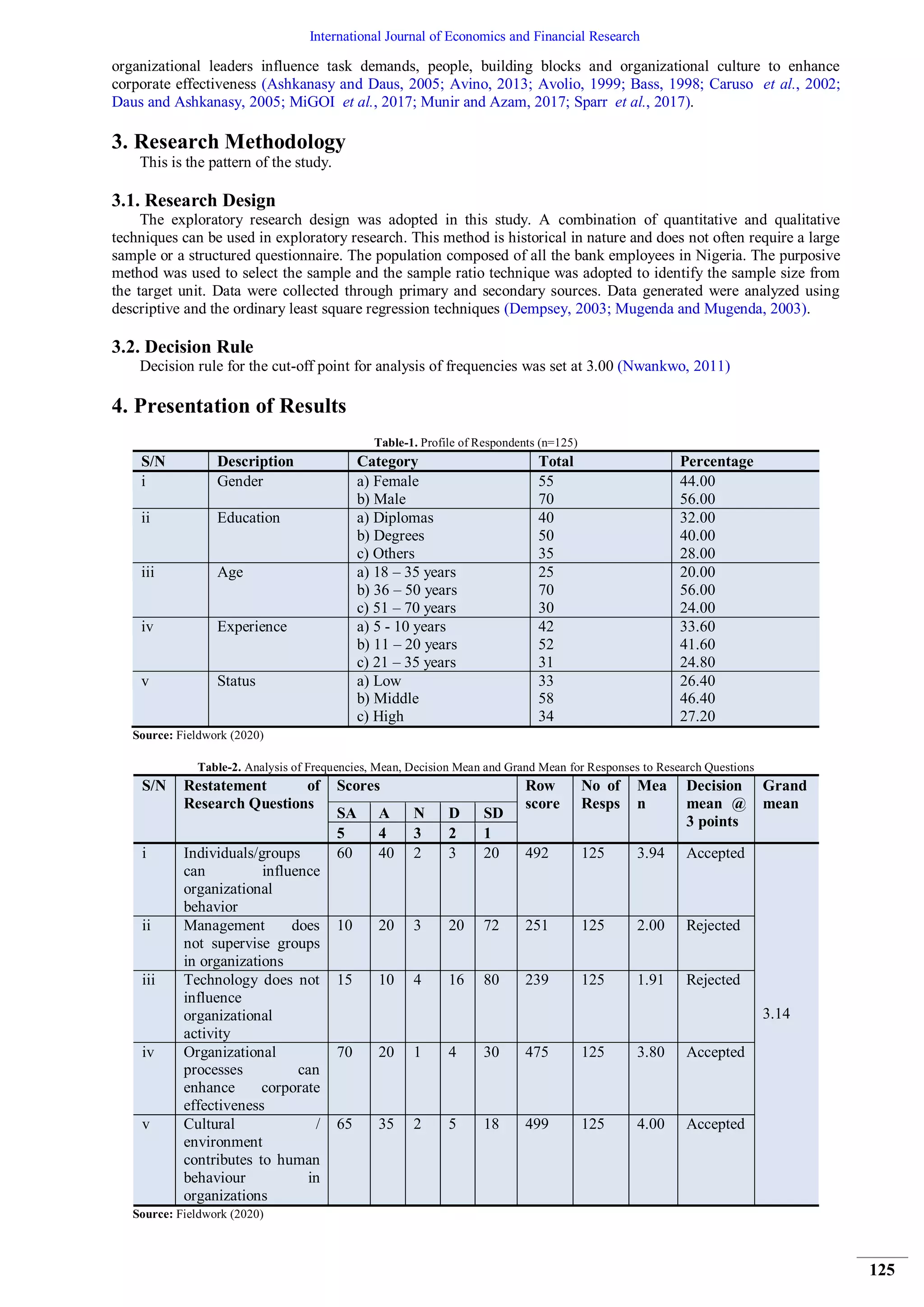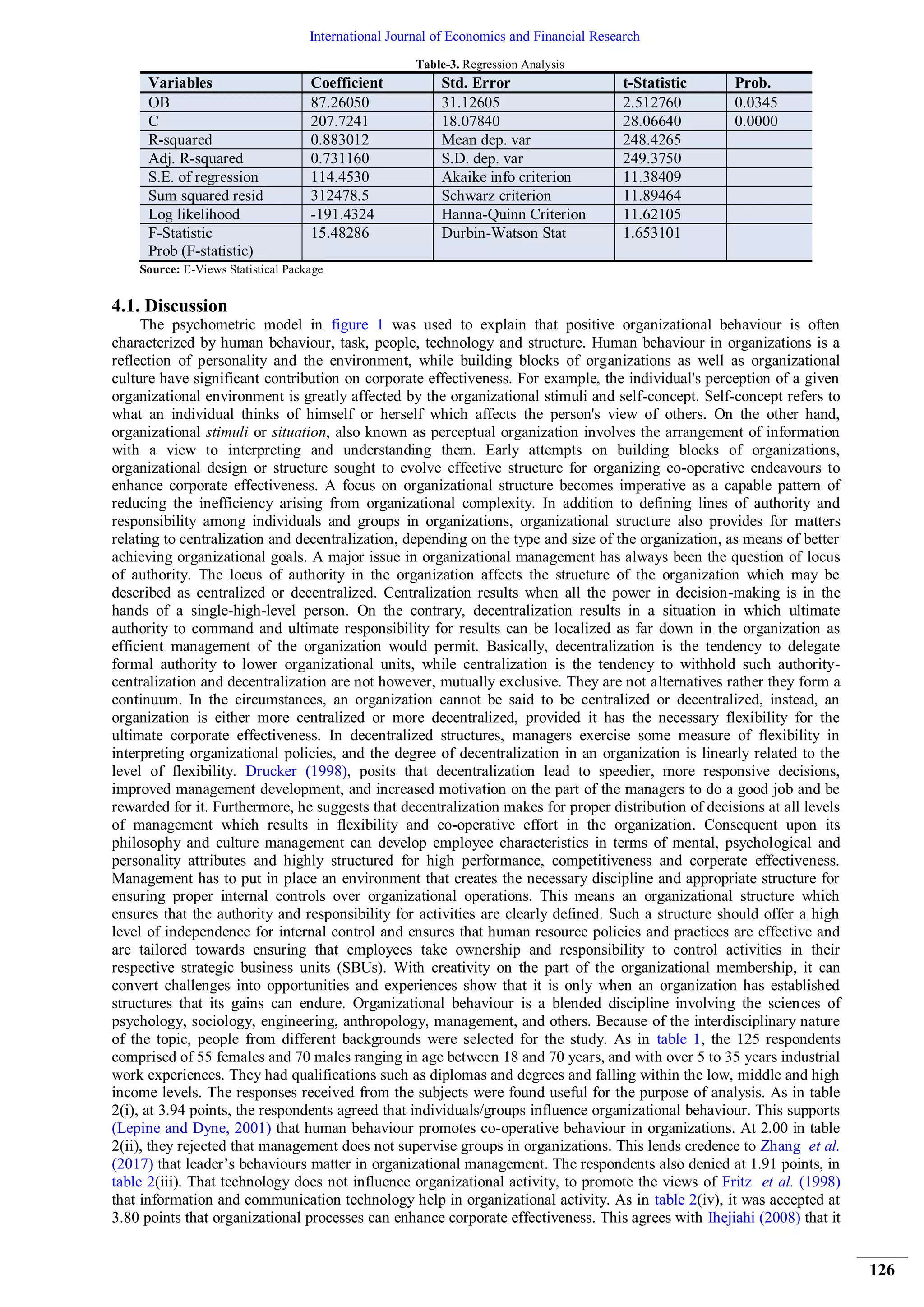This study explores the relationship between organizational behavior and corporate effectiveness, highlighting that organizational performance is influenced by the psychological and behavioral dynamics of individuals and groups. A strong positive relationship was found between these variables, suggesting that management should implement emotional intelligence programs to enhance cooperative behavior and effectiveness. The research underscores the complexity of human behavior within organizational settings and the importance of integrating individual traits with organizational structures and culture.








